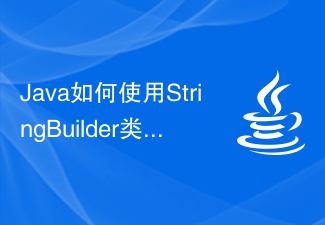 Web Front-end
Web Front-end JS Tutorial
JS Tutorial subString() method and slice() method of String class in javascript_javascript skills
subString() method and slice() method of String class in javascript_javascript skillsSection 2.8.4 of the book talks about the subString() method and slice() method in the String class. Their usage and return results are basically the same, as shown in the following example:
var strObj = new String("hello world");
alert(strObj.slice(3)); / / Output result: "ol world"
alert(strObj.subString(3)); // Output result: "ol world"
alert(strObj.slice(3, 7)); // Output result: "lo w"
alert(strObj.subString(3,7)); // Output result: "lo w"
As can be seen from the output of the above code, slice( ) method and subString() method call method and output results are exactly the same. Both methods return substrings of the string to be processed, and both accept one or two parameters. The first parameter is the substring to be obtained. The starting position of the string. The second parameter is to obtain the ending position of the substring. If the second parameter is omitted, the ending position defaults to the length of the string, and neither method changes the value of the String object itself.
Why are there two methods with exactly the same function? In fact, the two methods are not exactly the same, but they handle parameters slightly differently only when the parameters are negative.
For negative parameters, the slice() method will add the length of the string to the parameter, and the subString() method will treat it as 0, for example:
var strObj = new String("hello world");
alert(strObj.slice(-3)); // Output result: "rld"
alert(strObj.subString(-3)); // Output result: "hello world"
alert(strObj.slice(3,-4)); // Output Result: "lo w"
alert(strObj.subString(3,-4)) // Output result: "hel"
In this way, you can see slice() and subString() The main difference in approach. When there is only parameter -3, slice() returns "rld" and subString() returns "hello world". This is because for the string "hello world", slice(-3) will be converted to slice(8), and subString(-3) will be converted to subString(0). Similarly, the difference between using 3 and -4 is also obvious. The slice() method will be converted to slice(3,7), the same as the previous example, returning "low". The subString() method interprets these two parameters as subString(0,3), which is actually: subString(0,3), because subString() always uses the smaller parameter as the starting position, and the larger parameter The number is the final digit.
 如何解决 golang 中的 “panic: runtime error: slice bounds out of range” 错误?Jun 25, 2023 pm 12:42 PM
如何解决 golang 中的 “panic: runtime error: slice bounds out of range” 错误?Jun 25, 2023 pm 12:42 PM在Go语言中,我们常常会遇到一种错误,即“panic:runtimeerror:sliceboundsoutofrange”(切片越界)错误。这是因为我们在使用切片时,通常会对切片进行访问或者操作,可能会出现访问索引越界的情况。这篇文章将介绍这种错误的基本原因、如何避免和解决这种错误。1.切片越界错误的产生原因切片是一种引用类型,由底层
 Java如何使用StringBuilder类的substring()函数截取字符串的子串Jul 24, 2023 pm 12:13 PM
Java如何使用StringBuilder类的substring()函数截取字符串的子串Jul 24, 2023 pm 12:13 PMJava如何使用StringBuilder类的substring()函数截取字符串的子串在Java中,我们经常需要处理字符串的操作。而Java的StringBuilder类提供了一系列的方法,方便我们对字符串进行操作。其中,substring()函数可以用于截取字符串的子串。substring()函数有两种重载形式,分别是substring(intstar
 如何使用Java中的String.substring()方法获取子字符串?Nov 18, 2023 am 08:07 AM
如何使用Java中的String.substring()方法获取子字符串?Nov 18, 2023 am 08:07 AM如何使用Java中的String.substring()方法获取子字符串?Java中的String类提供了一个非常有用的方法substring(),可以用于获取字符串的子字符串。它允许我们从一个字符串中选择一部分字符,并将其作为一个新的字符串返回。本文将介绍如何使用Java中的substring()方法,并提供一些代码示例。使用substring()方法非常
 Golang中如何删除slice元素Mar 22, 2023 pm 02:22 PM
Golang中如何删除slice元素Mar 22, 2023 pm 02:22 PMslice可以看作是一个动态数组,它有着灵活的大小和容量,因此在开发过程中非常方便。不过,处理slice的时候我们也经常需要执行删除操作。这篇文章将介绍在Golang中如何删除slice元素。
 Go 语言中的 slice 是怎样使用的?Jun 11, 2023 am 08:53 AM
Go 语言中的 slice 是怎样使用的?Jun 11, 2023 am 08:53 AMGo语言中的slice是一种强大的数据类型,它可以让你方便地在数组或切片上执行操作。本文将介绍slice的基本概念,以及如何在Go语言中使用slice。slice的定义和初始化在Go语言中,slice用于表示一个动态数组。与数组不同的是,slice的长度是不固定的,它会根据所存储的元素数量自动增长或缩短。slice的定义格式如下:
 使用java的StringBuilder.substring()函数截取字符串的子串Jul 26, 2023 pm 11:45 PM
使用java的StringBuilder.substring()函数截取字符串的子串Jul 26, 2023 pm 11:45 PM使用java的StringBuilder.substring()函数截取字符串的子串在Java编程中,经常需要对字符串进行操作,其中一种常见的操作就是截取字符串的子串。Java提供了多种方法来实现这一功能,其中StringBuilder类的substring()函数是一种简便且高效的方法。StringBuilder是Java中用于操作字符串的一个类,它提供了
 使用StringBuffer类的substring()方法获取字符串部分内容的子串Jul 24, 2023 pm 12:41 PM
使用StringBuffer类的substring()方法获取字符串部分内容的子串Jul 24, 2023 pm 12:41 PM使用StringBuffer类的substring()方法获取字符串部分内容的子串在Java编程中,经常需要对字符串进行处理和操作。StringBuffer类是一个常用的字符串类,它提供了一系列方便的方法来操作字符串。其中,substring()方法是一个非常常用的方法,可以用来获取字符串中的一部分内容,即子串。下面将介绍如何使用StringBuffer类的
 如何使用slice函数在数组中提取元素?Nov 18, 2023 pm 01:28 PM
如何使用slice函数在数组中提取元素?Nov 18, 2023 pm 01:28 PM如何使用slice函数在数组中提取元素?在编程过程中,我们经常需要对数组进行提取元素的操作。而在许多编程语言中,都提供了一种方便的方法来实现这一操作,即使用slice函数。本文将详细介绍如何使用slice函数在数组中提取元素,并给出具体的代码示例。Slice函数是一种通用的函数,它可以用于从数组或切片中提取元素。它的语法非常简单,一般形式为:slice(st


Hot AI Tools

Undresser.AI Undress
AI-powered app for creating realistic nude photos

AI Clothes Remover
Online AI tool for removing clothes from photos.

Undress AI Tool
Undress images for free

Clothoff.io
AI clothes remover

AI Hentai Generator
Generate AI Hentai for free.

Hot Article

Hot Tools

SublimeText3 Chinese version
Chinese version, very easy to use

MinGW - Minimalist GNU for Windows
This project is in the process of being migrated to osdn.net/projects/mingw, you can continue to follow us there. MinGW: A native Windows port of the GNU Compiler Collection (GCC), freely distributable import libraries and header files for building native Windows applications; includes extensions to the MSVC runtime to support C99 functionality. All MinGW software can run on 64-bit Windows platforms.

SAP NetWeaver Server Adapter for Eclipse
Integrate Eclipse with SAP NetWeaver application server.

Notepad++7.3.1
Easy-to-use and free code editor

mPDF
mPDF is a PHP library that can generate PDF files from UTF-8 encoded HTML. The original author, Ian Back, wrote mPDF to output PDF files "on the fly" from his website and handle different languages. It is slower than original scripts like HTML2FPDF and produces larger files when using Unicode fonts, but supports CSS styles etc. and has a lot of enhancements. Supports almost all languages, including RTL (Arabic and Hebrew) and CJK (Chinese, Japanese and Korean). Supports nested block-level elements (such as P, DIV),




